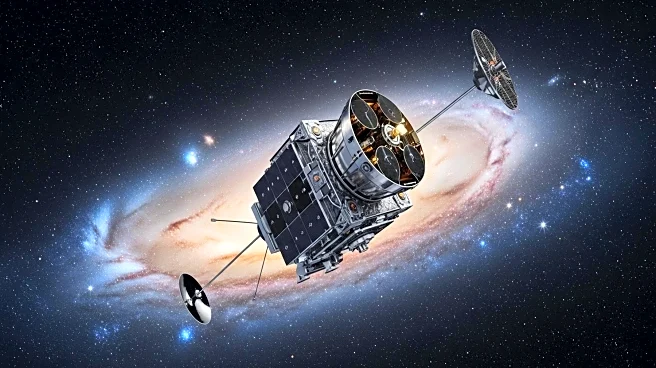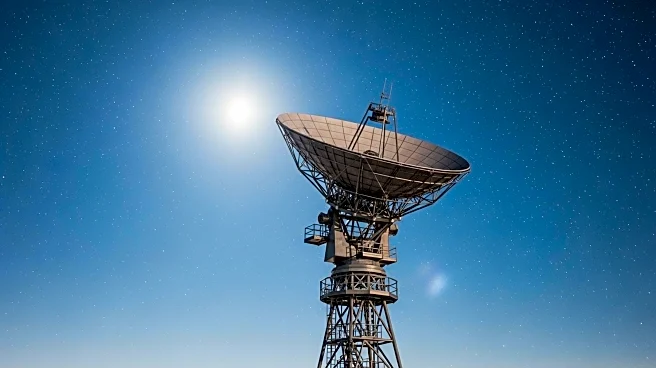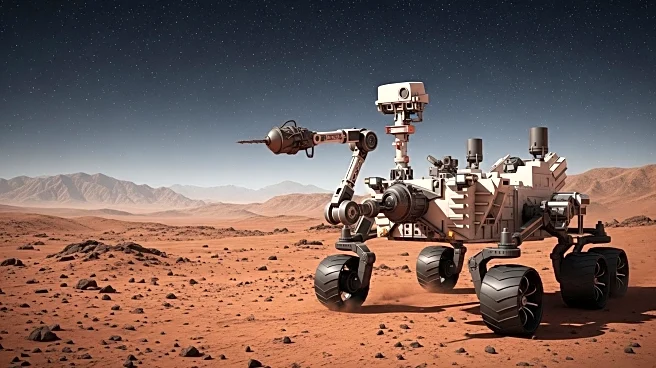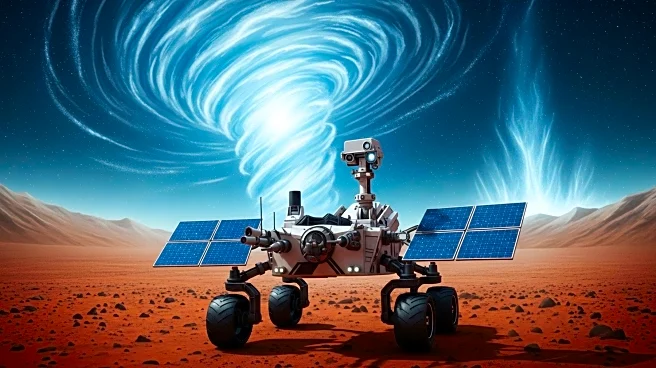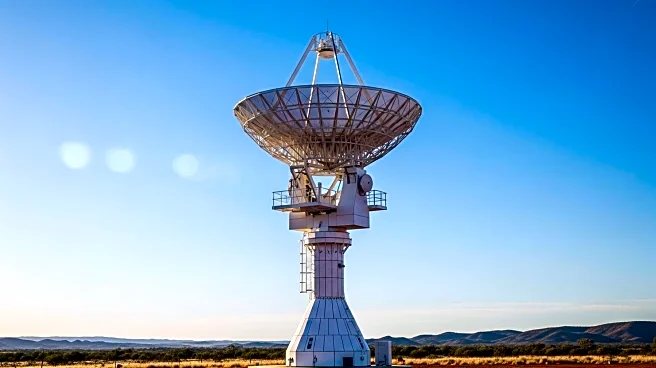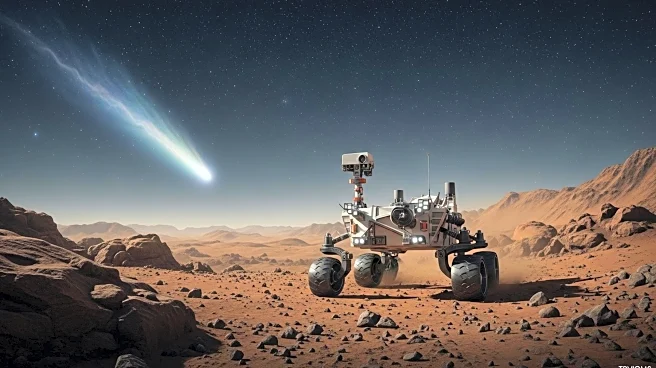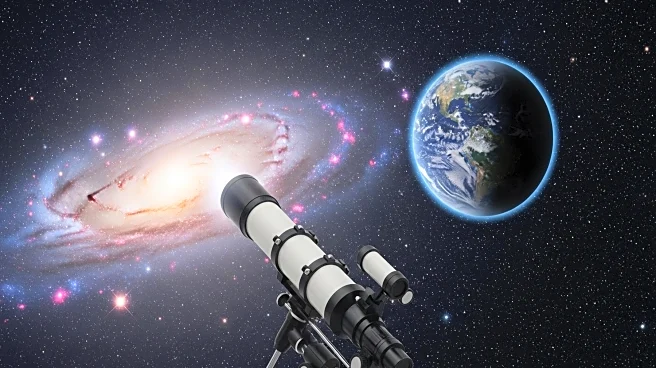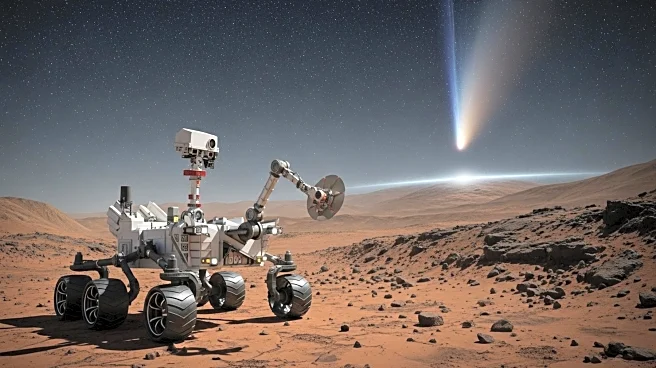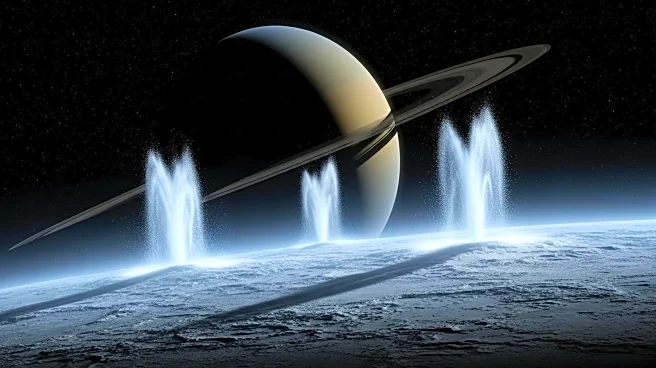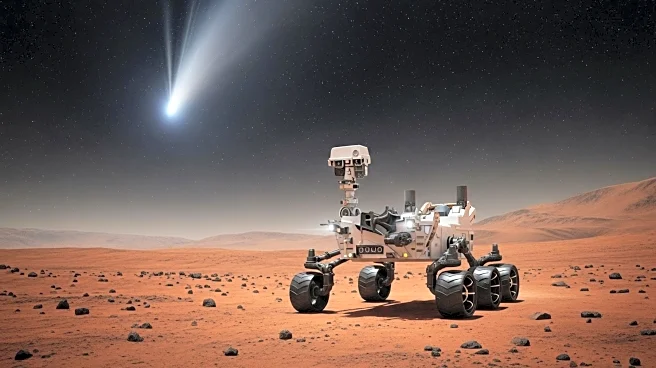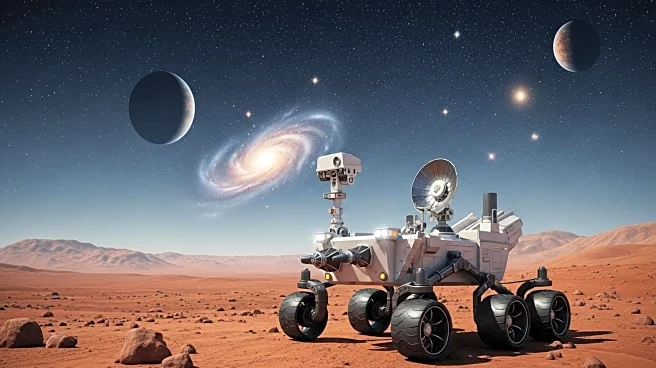What is the story about?
What's Happening?
The search for exoplanets is set to intensify with several new missions planned by NASA and international partners. The European Space Agency's PLATO mission is scheduled to launch in December 2026, aiming to find Earth-sized planets in the habitable zones of stars. Following this, NASA's Nancy Grace Roman Space Telescope will launch in 2027, utilizing gravitational microlensing to discover new planets. In 2028, the China National Space Administration will launch the Earth 2.0 mission, also targeting Earth-like planets. These missions are expected to significantly increase the number of known exoplanets, with estimates suggesting up to 100,000 new candidates. The current total of 6,022 exoplanets is anticipated to rise dramatically as these missions progress.
Why It's Important?
The discovery of Earth-like exoplanets has profound implications for understanding the potential for life beyond our solar system. These missions will not only expand the catalog of known planets but also enhance our understanding of planetary formation and the conditions necessary for life. The data collected could influence future space exploration strategies and international collaborations. The potential discovery of habitable planets could drive scientific and public interest, impacting funding and policy decisions in space exploration. Additionally, these findings could have cultural and philosophical implications, challenging our understanding of Earth's uniqueness in the universe.
What's Next?
As these missions launch and begin collecting data, scientists will face the challenge of analyzing and verifying the vast number of exoplanet candidates. The European Space Agency's Gaia mission is expected to release a catalog of exoplanet candidates in December 2026, further contributing to the influx of data. The development of new technologies and methods for studying exoplanet atmospheres, such as transit spectroscopy, will be crucial in characterizing these planets. Looking ahead, NASA's Habitable Worlds Observatory, planned for the 2040s, aims to directly image Earth-like planets, potentially revealing signs of life.
Beyond the Headlines
The search for exoplanets also raises ethical and philosophical questions about humanity's role in the universe and the potential for contact with extraterrestrial life. The technological advancements required for these missions could have broader applications, driving innovation in other fields. Furthermore, the international collaboration involved in these missions highlights the importance of global cooperation in addressing complex scientific challenges.
AI Generated Content
Do you find this article useful?
